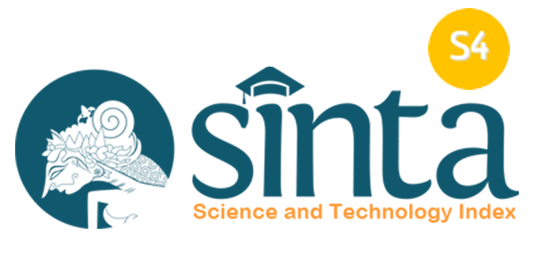Development of Folk-Dance Videos for E-learning
Abstract
Keywords
Full Text:
PDFReferences
Adams, W. K., and Wieman, C. E. (2011). Development and validation of instruments to measure learning of expert‐like thinking. International Journal of Science Education, 33(9), 1289-1312.
Akhter, S., Javed, M. K., Shah, S. Q., and Javaid, A. (2021). Highlighting the advantages and disadvantages of E-learning. Psychology and Education Journal, 58(5), 1607-1614.
Bannon, F., and Sanderson, P. (2000). Experience every moment: Aesthetically significant dance education. Research in Dance Education, 1(1), 9-26.
Eze, S. C., Chinedu-Eze, V. C., and Bello, A. O. (2018). The utilisation of e-learning facilities in the educational delivery system of Nigeria: a study of M-University. International Journal of Educational Technology in Higher Education, 15(1), 1-20.
Mabingo, A. (2015). Decolonizing dance pedagogy: Application of pedagogies of Ugandan traditional dances in formal dance education. Journal of Dance Education, 15(4), 131-141.
Rakočević, S. (2015). Ethnochoreology as an interdiscipline in a postdisciplinary era: A historiography of dance scholarship in Serbia. Yearbook for Traditional Music, 47, 27-44.
Risner, D., and Stinson, S. W. (2010). Moving social justice: Challenges, fears and possibilities in dance education. International Journal of Education and the Arts, 11(6), n6.
Risner, D., and Barr, S. (2015). Troubling methods -centric “teacher production”: Social foundationsin dance education teacher preparation. Arts Education Policy Review, 116(2), 78-91.
Șușu, P. (2018). On the educational potential of folk dance. Review of Artistic Education, 1(15), 127-150.
Wilcox, E. E. (2018). Dynamic inheritance: Representative works and the authoring of tradition in Chinese dance. Journal of Folklore Research, 55(1), 77-111.
DOI: https://doi.org/10.17509/ijotis.v2i1.41586
Refbacks
- There are currently no refbacks.
Copyright (c) 2021 Universitas Pendidikan Indonesia

This work is licensed under a Creative Commons Attribution-ShareAlike 4.0 International License.
Indonesian Journal of Teaching in Science (IJoTIS) is published by Universitas Pendidikan Indonesia (UPI)
 Indonesian Journal of Teaching in Science
Indonesian Journal of Teaching in Science



